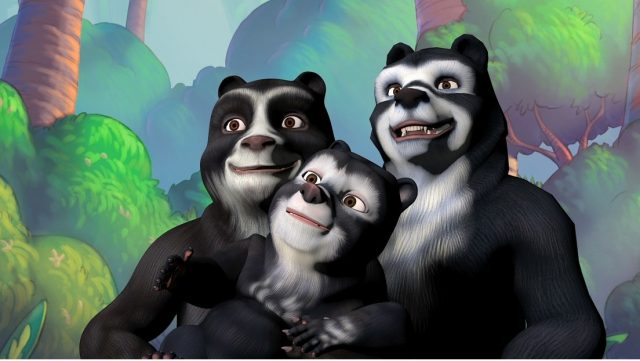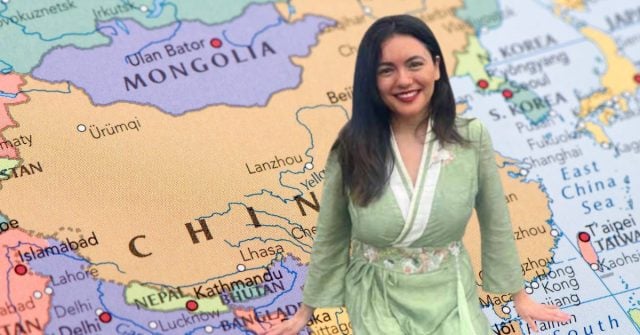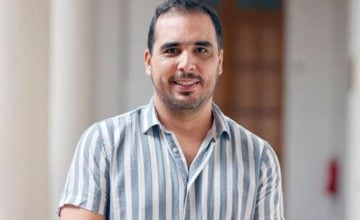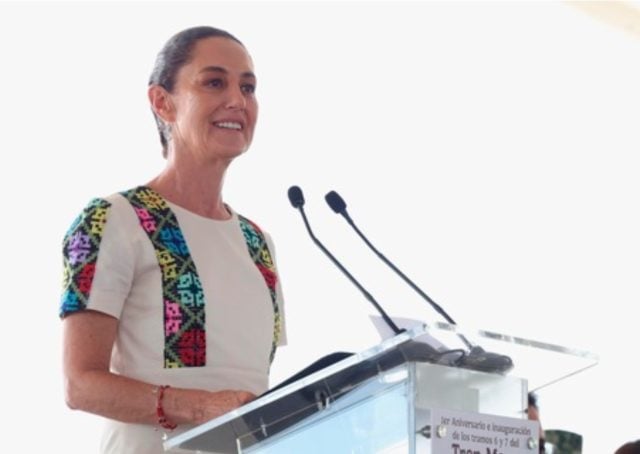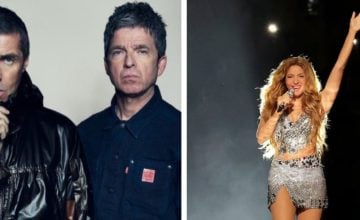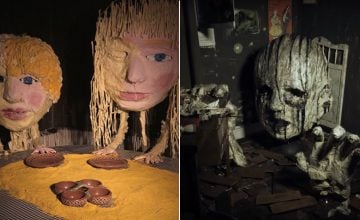Kaporito, the guardian of the mountain, has become a pioneering cinematographic work, as it is the first animated musical feature film made in Venezuela, which addresses – as its central theme – the preservation of the only native ursid of South America, the Frontino bear.
The film, which was recently awarded the Best Score for a Fiction Film at the Venezuelan Film Festival, recounts the adventures starring «Kaporito«, the frontin bear; Caribay, an indigenous girl; and several friends who live in the state of Mérida, a mountainous region located in the Venezuelan Andes.
Since childhood, Kaporito and his family have been persecuted by poachers who end up leaving him an orphan. Later, in a peasant settlement, the small Frontinian receives the help of the residents and his friend Caribay, who transform this harmless animal – in danger of extinction – into the main guardian of the mountain.
The story, which has as its main creators the director Viveca Baiz and the producer Donald Myerston, a couple with a wide cinematographic career, also highlights the importance of the community’s work to get the authorities to decree the habitable zone as a National Park of the Frontino bear and this has just become a reality in Venezuela.
«The idea that motivates the making of the story of our film is the preservation of the life of the Frontino bear», explains Baiz in an interview for RT, where she emphasizes that Kaporito is an 80-minute musical work with an educational background work aimed mainly for children.
For his part, Myerston comments to RT that Kaporito shows “the attacks of human society, especially capitalist society, to plunder nature to the maximum, a model that has forged a cruel way of destroying for the simple desire of profit. Kaporito points out this absurd predation with hard facts».
The story of the Frontino bear is a musical
Although the scientific name of the Frontinian is ‘Tremarctos ornatus’, this species is also known as ‘Jukumari’, ‘The wild one’, ‘spectacled bear’, ‘Andean’ or ‘South American’. Myerston emphasizes that, in the case of «Kaporito», «a phonetic approximation was sought that would synthesize the different names that the bear receives among indigenous people and peasants».
On the other hand, Baiz also highlights that the production – in which some 80 people worked for 10 years – also aspires to show Venezuelan identity.
«It is a film with a Venezuelan identity, which we worked so that when the public hears its music and sees its landscapes, it will recognize Venezuela», said the director, who entered the animation cinema arena in the 1990s and premiered her debut with the short film «La Equilibrista», in 1994.
Baiz highlights that the filming has seven original songs that describe the different situations that Kaporito lives in his daily life, and that are interpreted by Melissa Griffiths, a singer recognized as «The Queen of Rock» in the 80s. The music was directed by Alejandro Blanco Uribe and the sound direction was in the hands of Alan González.
On an aesthetic level – explains its creator – the film opted for a plastic proposal that combines 3D animation with 2D, which can be seen in the illustrations of the landscapes and in the texturing of the characters that seem drawn in crayon.
Making animated films in Venezuela
Donald says that this type of production is «much more difficult than in other countries» where there is a developed film industry, because in Venezuela there are no animation schools and the genre, so far, does not «have a decisive importance».
«In the few places where animation techniques are taught, they do not have financial support», says the director, who asserts that these characteristics make the genre «a marginal activity, which does not have a preferential stimulus by the State organisms that finance filmmaking in the country».
To change this, Myerston considers that «it is very necessary» to carry out reforms that improve current cinematographic legislation, and that it «contemplates films made for children and adolescents or those created by themselves, as a category in itself, so valuable like documentaries and fiction films».
At the same time, Viveca explains that those who dare with the genre must take into account the risk they take, because you have to «have the patience to be able to endure the time it takes to be able to do animation».
In addition, she says that this type of cinema is not made in the same way as the conventional one (not animated). For example, the characters must be created from scratch, looking for identity, voice, gestures. In Kaporito, they created 103 characters drawn by hand and then digitized, as well as 1,323 backgrounds for the locations. The total movie includes 115,200 frames, at a measurement of one frame per second, where each second contains 24 photographs of 12 original drawings.
Baiz indicates that, to animate, pre-production is the most important thing because it is “like a chef who has to have everything on the table in order to start cooking. It is the most difficult, long and cumbersome stage of the shoot».
Another work that is a priority is the soundtrack. «In conventional cinema it can be done at the end but in animation it is essential, because the more enriched it is, the better it will be for the production and for the animators, who need all possible sound references: voices, noises, environment».
«Either we invent or we err»
For Kaporito to come to life, its filmmakers also had to face the adversities that have arisen in Venezuela during the last decade: the hyperinflationary phenomenon, the massive migration of professional talent, the imposition of economic sanctions against the country, among other difficulties Venezuelans face daily because of the unilateral coercive measures imposed by the US and the European Union.
«It was very difficult», says Myerston, about the constant change of personnel. «Many of them were migrating to other trades, other projects or other countries». However, he emphasizes that in doing films, one should do as Simón Rodríguez, the legendary teacher of Simón Bolívar used to say: «Either we invent or we err».
«As long as there is a country willing to move forward, we will find a way», says Myerston, stressing that they were always vigilant so as not to get their hands tied by the «terrible conditions» that the country, its people and its economy faces.
«With the issue of the ‘wild’ inflation that has attacked the Venezuelan economy, it is difficult to determine how much Kaporito has cost», says Myerston, who highlights that to make the feature film they could not count on private investment despite seeking it, but with contributions and financial support from the State, through the National Autonomous Cinematography Center (CNAC), the Villa del Cine Foundation, the Ibermedia Program, the Central Bank of Venezuela (BCV) and the National Telecommunications Commission (Conatel).
“Making movies in Venezuela is possible and Kaporito is a compelling sample. The support of the Venezuelan organizations is real and it works. The officials of these institutions are sensitive to the needs and limitations caused by inflation. They are making an effort in a context of an economy attacked from abroad», adds Donald.
The preparation of the film meant a long process of personal fulfillment and continuous learning, they said. “We are exhausted, but we are happy. What we can tell you is that our health suffered, especially due to the enormous stress we were subjected to. The other great satisfaction is the number of young people who developed themselves as professionals in the process».
Kaporito as a ‘film school’
Viveca and Donald consider that Kaporitobecame «a film school» because everybody who worked in it learned from the process, expanded their techniques and knowledge, and shared with professionals from different branches, who had their first experience in animation and film. «In addition to filmmakers, we are educators», they said.
For example – Donald says – on several occasions they had to adjust to personnel changes. After the departure of the initial team, a group of 9 Cuban specialists from the Anima company and from the Animation Studios of the Havana ICAIC entered into the project.
When the Cubans left, the creators began a training and teaching program in which young residents of the Caracas parish La Pastora (Viveca and Donald´s place of residence) participated in the project, with whom they completed the process of corrections and polishing of the film. «It was wonderful to see how these young people were committed to finishing the film».
Both advise future animators to «plan each step they are going to take, not to skip stages, because animation is an exact science and every shortcut costs you in time and money».
Kaporito made its official —not commercial— premiere at the Teresa Carreño Theater in Caracas on July 18 to celebrate Children’s Day. It also had a special open-air presentations for the Venezuelan Film Festival and in the Plaza de La Pastora, on July 24, to celebrate the date when the Liberator Simón Bolívar was born.
The commercial premiere of the film will take place after the feature film has participated in several international festivals that were programmed by the distribution company, Amazonia Films. The first of these events will be the Kolibrí Festival, which takes place in Bolivia, one of the countries that also protects the South American bear.
